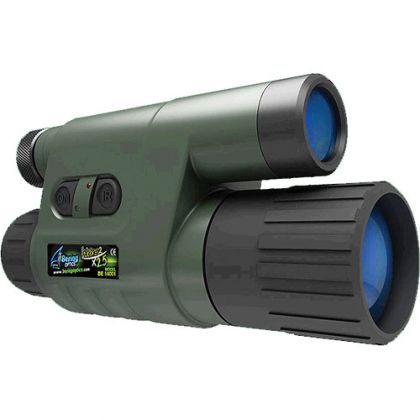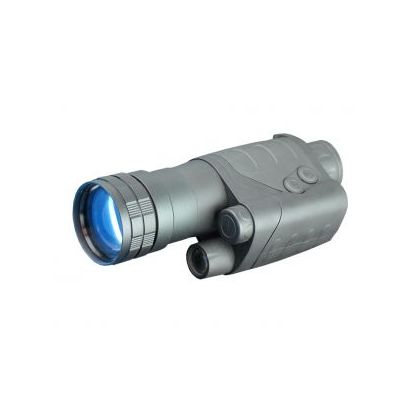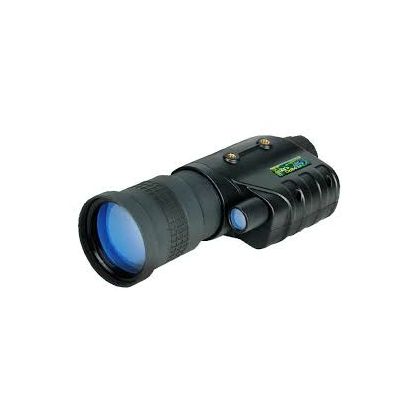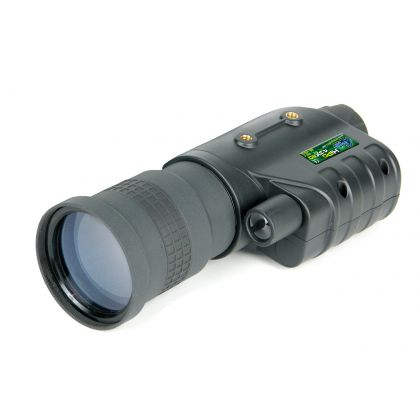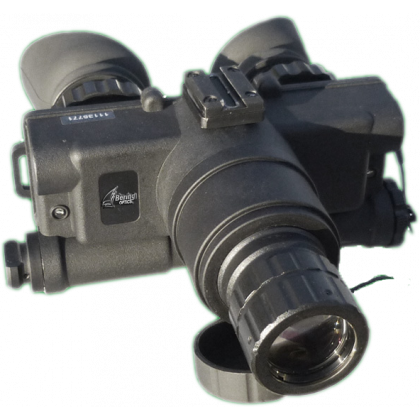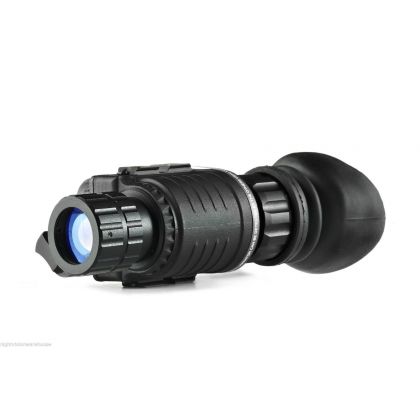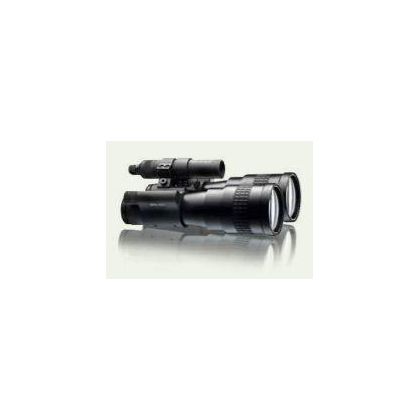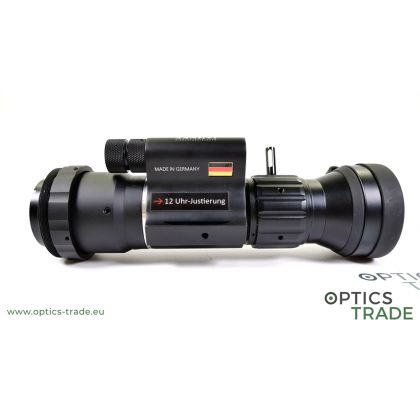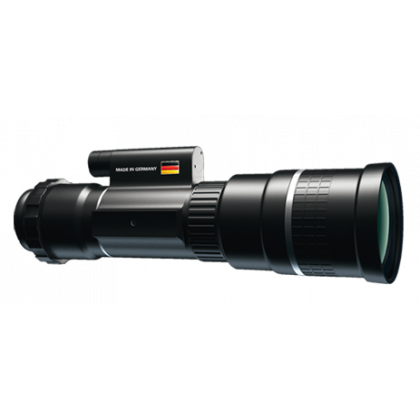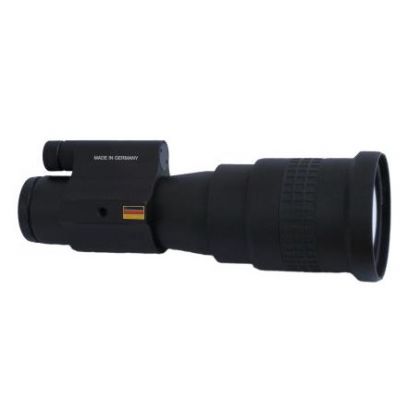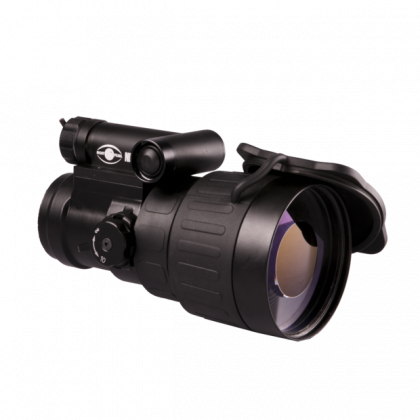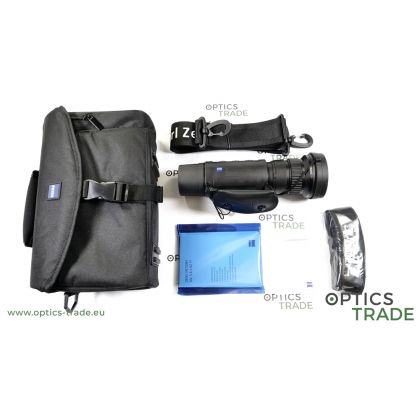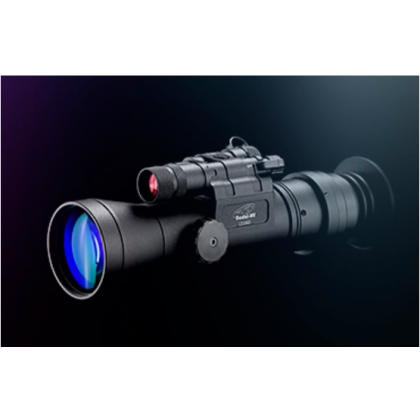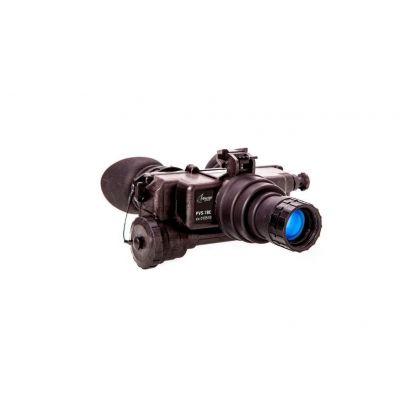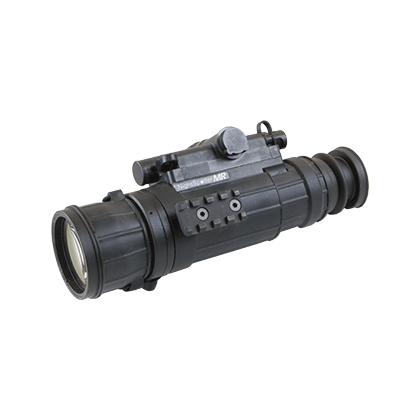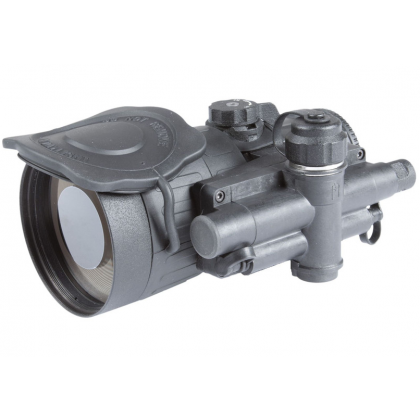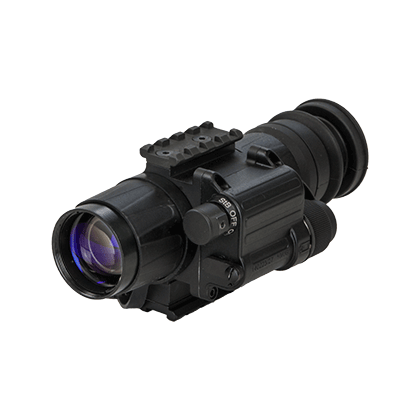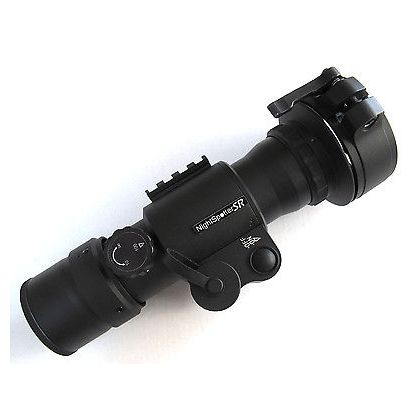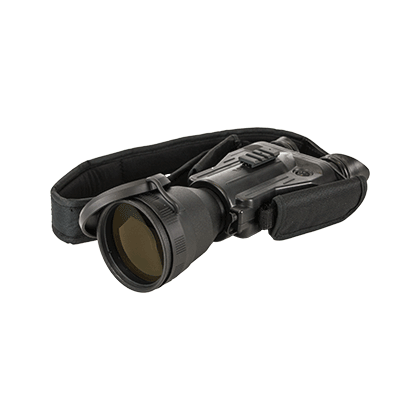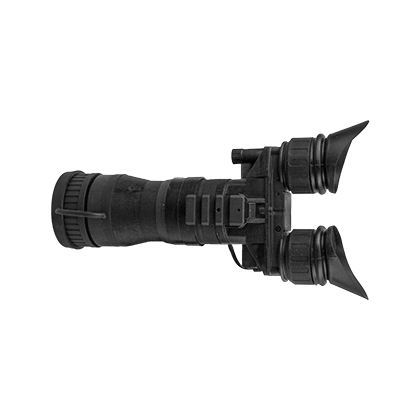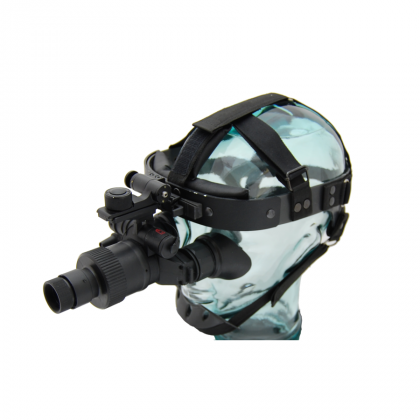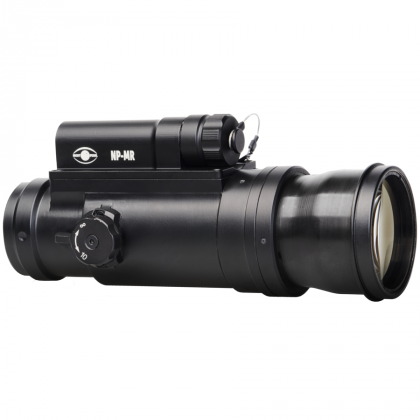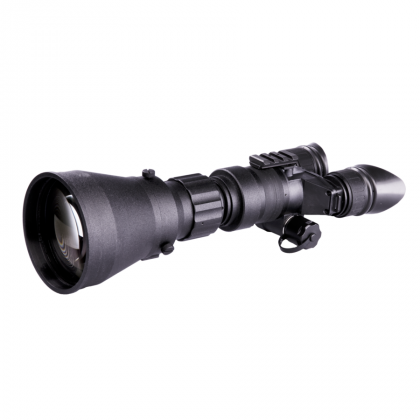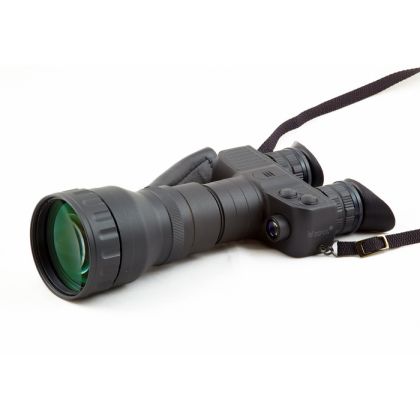Mounts
Analog Night Vision
Sub Categories
Analog night vision devices are optoelectronic devices which produce an image quite similar to the one you see with your eyes, just with other colors. Night vision devices amplify the rest light in the night with the help of a photocathode and an image intensifier tube, so you get a brighter image for observing at night. These night vision devices operate in the visible and also near-infrared spectrum, while thermal devices operate only in the infrared spectrum.
Analog night vision devices are classified by generations, which also identifies how much the image intensifier tube amplifies the light of the environment. There are 4 night vision generations, and 3 of these generations are still available on the market. The difference to digital night vision devices is that you see the image directly through the device without a screen. This means the device has no refresh rate, so the image is displayed in the normal time without any delay. The newer analog generations have also much better image quality than digital night vision devices.

Pulsar Analog Night vision Scope Challenger GS 3.5x50
The image color is normally black and green, but from the 2nd generation upwards, also better photocathodes are available with white phosphor, which display a black and white picture.
These photocathodes are normally more expensive, but give you better contrast, target recognition and are more comfortable for your eyes.
The small drawback of these NV devices is, whatsoever, that they don't have some special features like taking photos or videos or even change the color of the image. If you turn the analog night vision device on in a bright sunny day, you can also easily damage the image intensifier tube. This can't happen with a digital night vision device.
The first Gen. 0 night vision devices were developed in 1935, and some were already in use by the Germans in the second world war. These NV devices were very big and needed an additional infrared light source. Because these NV devices are not in use today anymore, they are not so important here.
Night vision generations that are available today:
- Generation 1 Night vision devices
- Generation 1+ Night vision devices
- Generation 2 Night vision devices
- Generation 2+ Night vision devices
- Generation 3 Night vision devices
Analog NV devices are available for many applications. Because of that, they are built for each purpose differently, to get the best features for each use. The selection of NV devices by purpose is the same for many years, with just small differences in sizes and shapes of the NV devices.
Today you can find NV devices as:
- Analog night vision Goggles
- Night vision Binoculars
- Night vision Rifle scopes
- Night vision Clip-on devices
Green vs. Black&White IIT
An Image Intensifier Tube (IIT) is the main component of a night vision device. It tells us how good we will see in dark areas, and how many times the light gets amplified through the device. The main difference makes the generation of an IIT, but Generations 2 and 3 IIT´s can be ordered also in green or black & white.
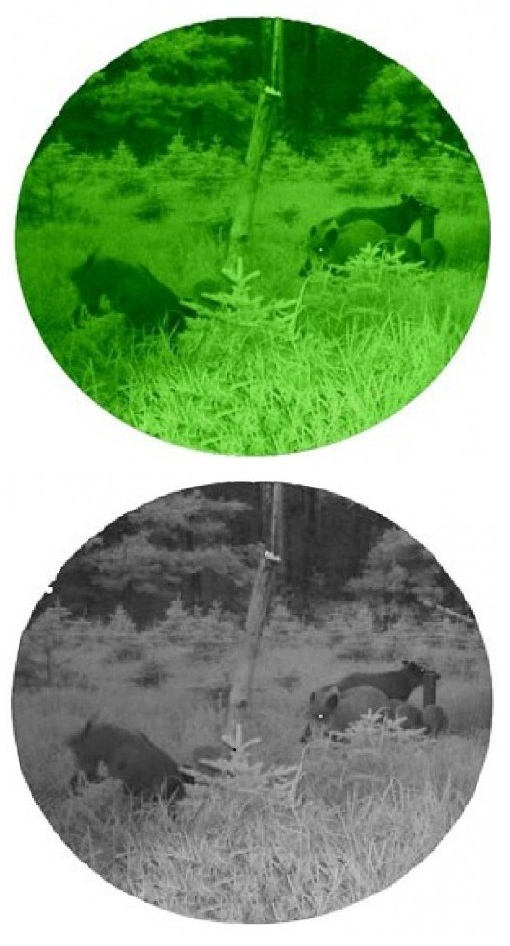
Green vs. Black&White IIT
The differences are not big, but both have some advantages. For many people, observing for a long period of time is much more comfortable with a night vision device that features a green IIT since the green color is more soothing for the eyes. The green IIT´s have often a brighter appearance, but the detail recognition is mostly better with a black & white IIT.
It is also worth mentioning that Night vision device which feature a black & white image intensifier tube, are in most cases more expensive than the green ones.
NV Goggles vs NV Binoculars
The difference between night vision goggles and binoculars is often not easy to separate. These NV devices have often the same housing but still, one is called binoculars and one goggles. The only difference is the magnification.
- Analog Night vision goggles have true 1x magnification, which is very important
- Analog NV binoculars offer a magnified picture (3x, 4x, 5x, etc.)
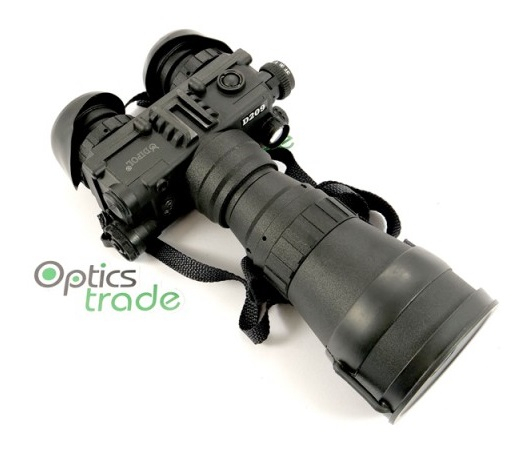

Night vision analog Binoculars and Night vision analog Goggles
Why is it very important that NV goggles have true 1x magnification?
Primally they were designed for helicopter pilots and soldiers on foot. Because of that, the image has to be as normal, with no magnification, so the user had a picture like during the day. With a magnified picture the users would not have the true sense of distance, so it would be impossible to fly a helicopter or walk.
Today night vision goggles are still widely used by the military and other professionals all around the world. It enables the user to move freely and offers a wide field of view during the night. With night vision goggles that are mounted on the head of the user, the user can also aim with a weapon – many red dot sights on the market even feature a night vision friendly illumination. Many night vision goggles can also be easily transformed into night vision binoculars or vice versa, just by swapping or adding the objective lens.
Night vision binoculars, on the other hand, offer a magnified picture, so the detection range and recognition range can be drastically improved. The details the user can see during the night is much bigger, even on extended ranges. Night vision binoculars are available in many different magnifications, but the biggest downside of binoculars is, that the user can not walk freely when observing. Also the field of view is much smaller, but this mostly depends on the given magnification – the bigger the magnification, the smaller the field of view.
NV Binoculars vs NV scopes (NV Monoculars)
- Pros and cons of each
- Night vision scopes (monoculars)
- Lighter in weight
- Smaller, so easier to carry around
- Cheaper – only one Image intensifier tube
- Hard to combine rifle scopes and NV scope on the same eye
- Night vision binoculars
- better viewing experiences
- eyes were made to be used both at the same time
- hard to set: both tubes need to be focused and proper diopter correction needs to be set
- Night vision scopes (monoculars)
Commercial grade Photonis Image Intensifier Tubes
Photonis image intensifier tubes are the most common used IIT´s in Europe. They are made in Nederland, and the “Commercial grade“ IIT´s are most common on the civilian market. They can have some imperfections in the field of view, but they are rated by levels of imperfections, so the user can many times decide which one to choose.
These IIT´s are cheaper than the ones with no imperfections, but still offer a great and intensified image.
Resolution in night vision devices
The image intensifier resolution is measured in lp/mm, which means Line Pairs per Millimeter. This is a test that was determined from a 1951 U.S. Air Force Resolving Power Test Target. The IIT is tested on different-sized patterns of three horizontal and three vertical lines. The tester must clearly discern all the horizontal and vertical lines and the spaces between them in the pattern. So the smaller the pattern and the space between the lines can be discerned, the better the resolution. These numbers can variate, but they do not tell us what for a generation this IIT is.
- For example, a low-quality IIT from the second generation can have a resolution of 35-40 lp/mm, where the best ones currently on the market can have even 67-74 lp/mm.
- Like this, also other generation IIT´s can variate. A night vision with 60 lp/mm and above delivers a high-quality picture with great details.
Whatsoever, the performance of an image intensifier tube is also measured in SNR, which stands for the Signal to Noise Ratio. This is a value, which determines the IIT´s resolution in low light conditions. So the higher the SNR number, the better can the tube resolve objects under low light conditions.
FOM in NV devices
All NV devices do also tell us the FOM number, which means Figure of Merit. This is a number, where the Resolution and the -signal to noise ratio are multiplied.
FOM = Resolution X Signal-to-Noise Ratio
Because the manufacturing of image intensifier tubes is very difficult, small differences can happen, so each tube is slightly different. So with small differences in the batch, each IIT has a different resolution and SNR number. Because of that, the manufacturers give us rather the FOM number than some exact values.
NV devices vs thermal devices
There are many advantages but also disadvantages of night vision devices against thermal devices.
Night vision
- (+) Realistic image
- (+) Better image quality at shorter ranges
- (+) Better detail recognition at shorter ranges
- (+) Cold objects are clearly visible
- (+) Antlers can be perfectly evaluated
- (+) Small energy consumption
- (-) Animals behind dense vegetation are not visible
- (-) More difficult to detect animals at all ranges
- (-) At complete darkness, an additional IR illuminator is needed
- (-) An IR illuminator under 850 nm can be visible to animals
- (-) Can not see through heavy fog, rain or snow
- (-) The flash from a firearm is longer noticeable (difficult to track animal after the shot)
- (-) Not possible to take photos or videos
Thermal imaging
- (+) Easy detection of animals at all ranges
- (+) Animals easy to see behind dense vegetation
- (+) No additional IR illuminator needed
- (+) Can see through heavy fog, rain or snow
- (+) Flash from a firearm is almost not noticeable
- (+) Possibility to take photos or videos

Thermal Imaging
- (-) Small cold objects in front of an animal are difficult to see (trenches, grass, etc.)
- (-) Details are not well visible
- (-) Antlers not well visible and almost not visible at bigger distances
- (-) Bigger energy consumption
A short presentation of Analog Night-vision Optics is available here.
Video presentation
Filters
Sort
Filters
Sort
